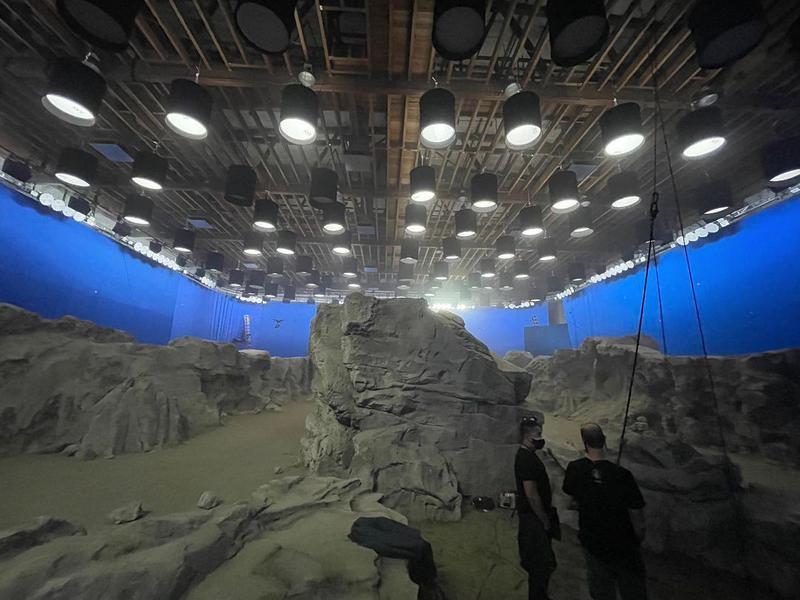
Lucasfilm's Obi-Wan Kenobi finally finished up its run after six episodes, and for the most part, people seemed to enjoy the experience. At the very least, it's probably safe to assume nearly all fans found happiness somewhere in Ewan McGregor's return. One of the biggest elements of his character coming back isn't the plot behind it, but rather the technology that helped bring it to life.
Thanks to The Mandalorian, and the success found there, Stagecraft's Volume technology has been utilized on many recent projects—with Thor: Love and Thunder being a notable example right around the corner. The tech is basically a green screen dialed up to 11. Backgrounds are digitally created and put right on the screen so that it's active in the scene as the actors film in real-time in front of it.
So, when streaming the Disney+ series, many viewers are probably asking themselves what might be a screen in the shot, and what's actually practical. Now, thanks to some behind-the-scenes photos, fans can now get answers to those questions; including what the set looked like where Vader and Obi-Wan clashed with lightsabers.
Obi-Wan: What's Real, and What's Fake?
Some new behind-the-scenes images from the Obi-Wan Kenobi Star Wars Disney+ series were revealed on Instagram thanks to Sumolight USA, and they provide some interesting glimpses at to what was real or fake on screen.
When Anakin duels his master, Obi-Wan, in Episode 5, most of the set was real. However, anything past those pillars was all an LED screen courtesy of Stagecraft's The Volume technology.

It looks like the creatives behind the scenes made a specific effort to have as much practical scenery on set as much as possible, as this photo shows that most of the rocks within distance of Obi-Wan and Vader in their final fight were all very real.

Here's an angle of that same set and scene. It's unclear if the blue screens in the back were used in a traditional manner, or if it's simply covering up the Volume and its massive screen—after all, crew members can be seen setting up in the corner.

In addition to those neat photos, a video made its way online, as posted by The Star Wars Underground on Twitter, that showcases Darth Vader stunt double Tom O'Connell doing an epic stunt in his final battle with Kenobi.
#BehindTheScenesSunday🎬 Stunt double Tom O’Connell (Vader) goes flying while performing an extraordinary stunt sequence on the set of #ObiWanKenobi. Footage via: https://t.co/JqaaLv2ZQL pic.twitter.com/vtb8snf7TA
Did Vader and Obi-Wan's Big Moment Benefit With The Volume?
As great as The Volume is, however, it does still have its limitations. For one, many fans have speculated that some of the show’s awkward chase scenes didn’t look 100% real due to the small space they had on stage with the LED screen behind them.
Without proper depth, made from a combination of depth within the Volume’s background and the practical objects on set, the general image can come off very flat. This can be glimpsed whenever there is a large expanse behind the characters, like where Darth Vader and Obi-Wan had their last duel.
Another element of the technology that is easy to spot is how it can make most sets feel circular—with many scenes, such as Kenobi and Anakin’s prequel duel, having been specifically crafted with that spherical constraint in mind.
While the technology isn’t without its faults, there’s no denying how it’s dramatically increased the capabilities of what can be done for a show like Kenobi. Not just visual fidelity, but also with an actor’s performance, since they can actually see their surroundings.
The Volume is certainly not going anywhere anytime soon; in fact, it was just adopted for a project outside of both Star Wars and Disney: Percy Jackson and the Lightning Thief. Hopefully, the tech will continue advancing to the point where it’ll be near impossible to ever notice there’s a screen there in the first place.
Obi-Wan Kenobi is now streaming in its entirety on Disney+.












